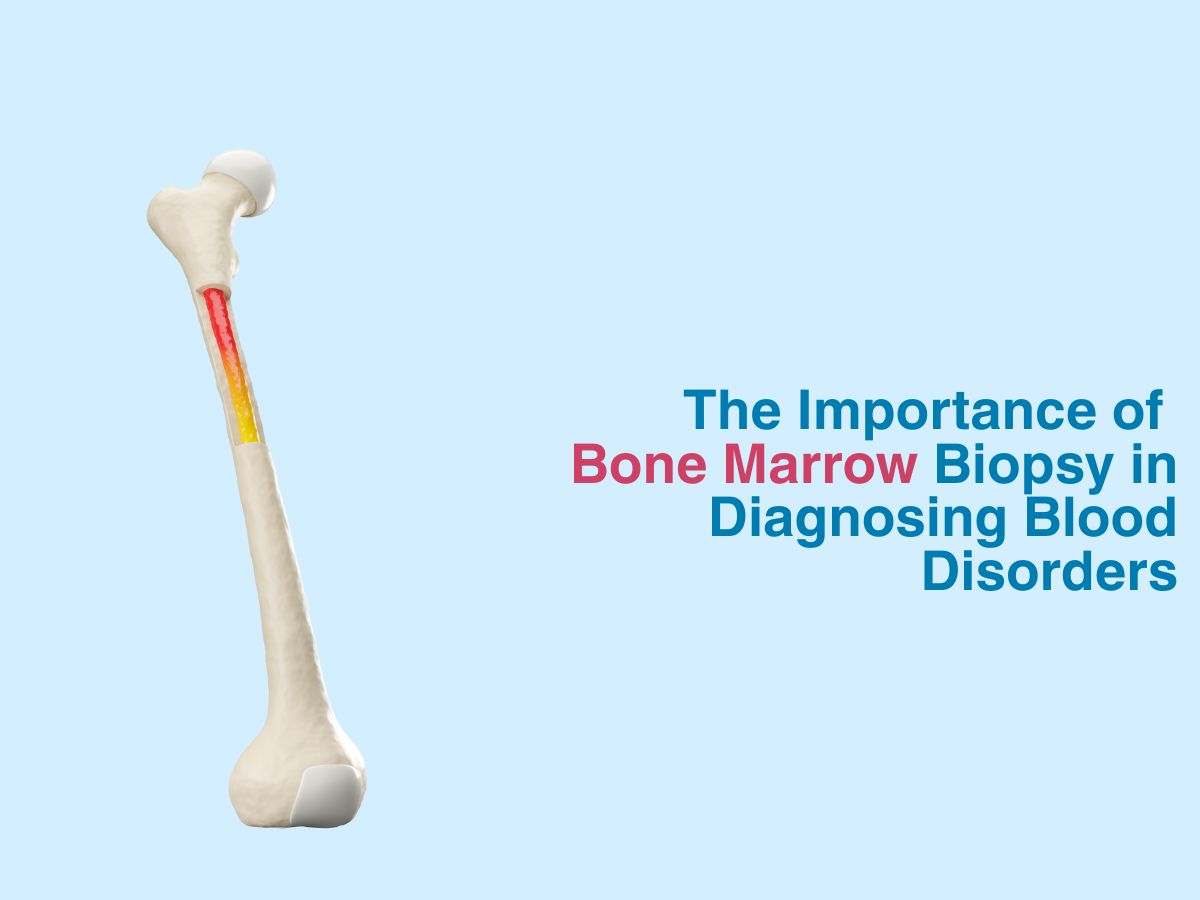
The Importance of Bone Marrow Biopsy in Diagnosing Blood Disorders

To the normal eye, a bone looks very hard and lifeless. But, deep within some of the largest bones, there is a specialised tissue called the bone marrow- which is where new blood cells are made. Marrow has a distinct cellular architecture where everything is organised correctly. If there is no cancer, then the cells are all normal and there is a clear difference between stem cells, dividing cells and mature cells- all found in distinct layers. But, with cancer, this careful order gets messed up.
What Is A Bone Marrow Biopsy And Why Is It Needed?
A bone marrow biopsy is done to visualise the solid part of the bone marrow, while an aspiration takes a liquid sample out to look at it. It is normally suggested when the doctor suspects that you may have some blood cancer- and to check how severe the condition is. It can also be done in normal conditions to check if you have enough iron in the body. It may also be used as a tool to see why you have a high fever of unknown origin. Mainly though, it is used to diagnose all types of blood cancers, anaemia, blood cell related issues where you are deficient in specific cell types, hemochromatosis or if there is any metastasis into the bone of some malignant tumour found elsewhere in your body.
When Is A Bone Marrow Biopsy Recommended For Diagnosing Leukemia?
If a complete blood cell count or blood smear reveals abnormal amounts of white blood cells, red blood cells or platelets, then you will be asked to get a bone marrow biopsy. They are pretty common in diagnosing acute leukemias but not for Chronic Lymphocytic Leukemia (CLL).
How To Prepare For A Bone Marrow Biopsy Procedure
A haematologist or an oncologist can perform a bone marrow biopsy, while a pathologist will look at the sampel under the microscope and give them the results. Since a heavy gauge needle is used to obtain the sample, you will receive local anaesthesia. You should talk to your doctor about any bleeding disorders, anticoagulants or allergies you may have and if you are pregnant. If you are going to be sedated, or anaesthesia will be given, then you will need to fast the previous night.
What To Expect During And After A Bone Marrow Biopsy?
The whole procedure will not take more than 30 minutes and you won’t need to stay in the hospital either. But, you will need to come home and rest. You will first lie down and then the doctor or nurse will clean the biopsy site with some antiseptic. They will then inject the numbing agent and then make a small cut, insert the needle and then aspirate the sample out. If the solid sample is needed, then a special needle alone is inserted, which has a hollow space in it, so that bone marrow can be taken out. This is called a core biopsy. They will then press down on the incision and stick on a bandage.
Since bone cannot be anaesthetized, it is a pretty painful procedure. You will feel some sharp pain, and then some pressure in the bone as the sample is being taken out and when the needle moves. The best thing you can do is stay put after going home and rest. Don’t lift anything for the next 2-3 days. Complications are super rare, but if you notice any fever or swelling at the biopsy site, then talk to your doctor immediately. You can take painkillers to feel better.
Conclusion
A bone marrow biopsy is an essential diagnostic tool to help your doctor check if you have some blood related issue- like cancer, anaemia, hemochromatosis, or if you have any fever that cannot be explained. It is a painful procedure, but is necessary if the doctor suspects that you have cancer and they are not able to conclusively tell you what the problem is just from a peripheral blood sample. It does not take very long and you will begin to feel better in a couple days. You can also ask your doctor about anything else you have in mind, before getting the procedure done.
Frequently Asked Questions
What conditions can be diagnosed with a bone marrow biopsy?
How do doctors determine if I need a bone marrow biopsy?
Are bone marrow biopsies painful, and how long does the procedure take?
What are the risks and potential complications of a bone marrow biopsy?
What is the difference between a bone marrow biopsy and a blood test for diagnosing blood disorders?






